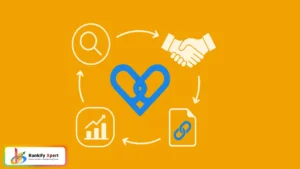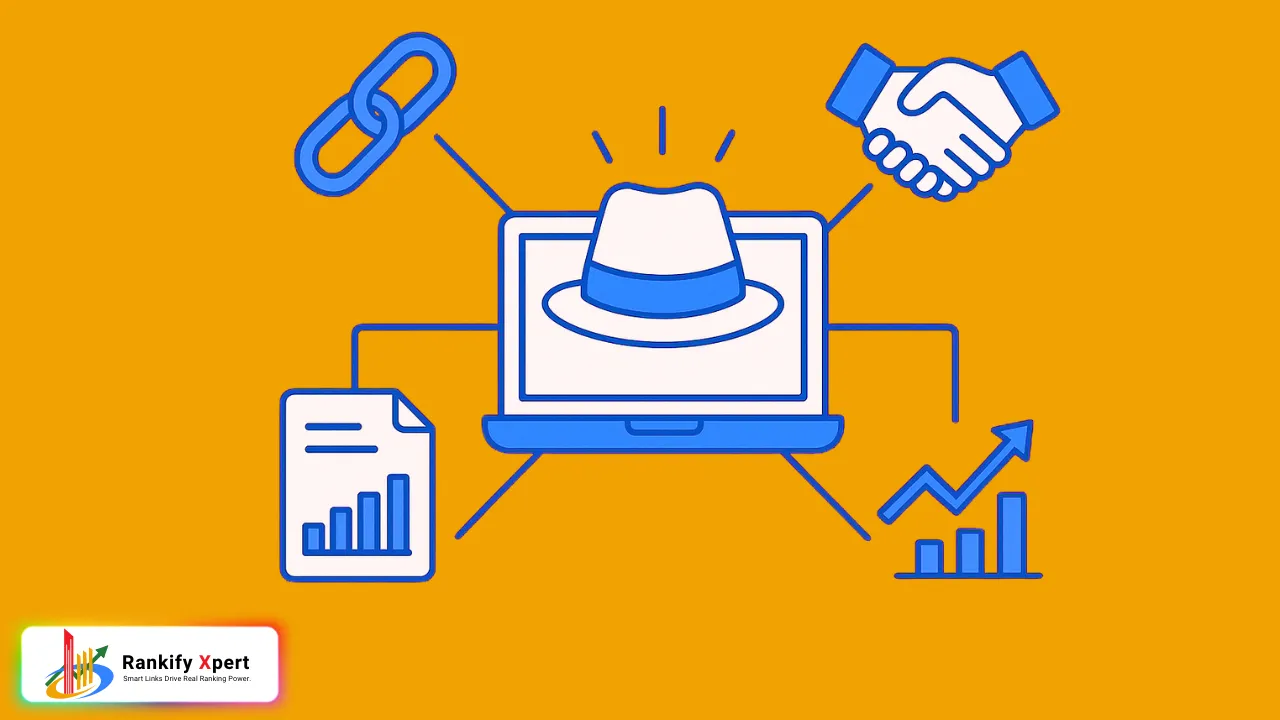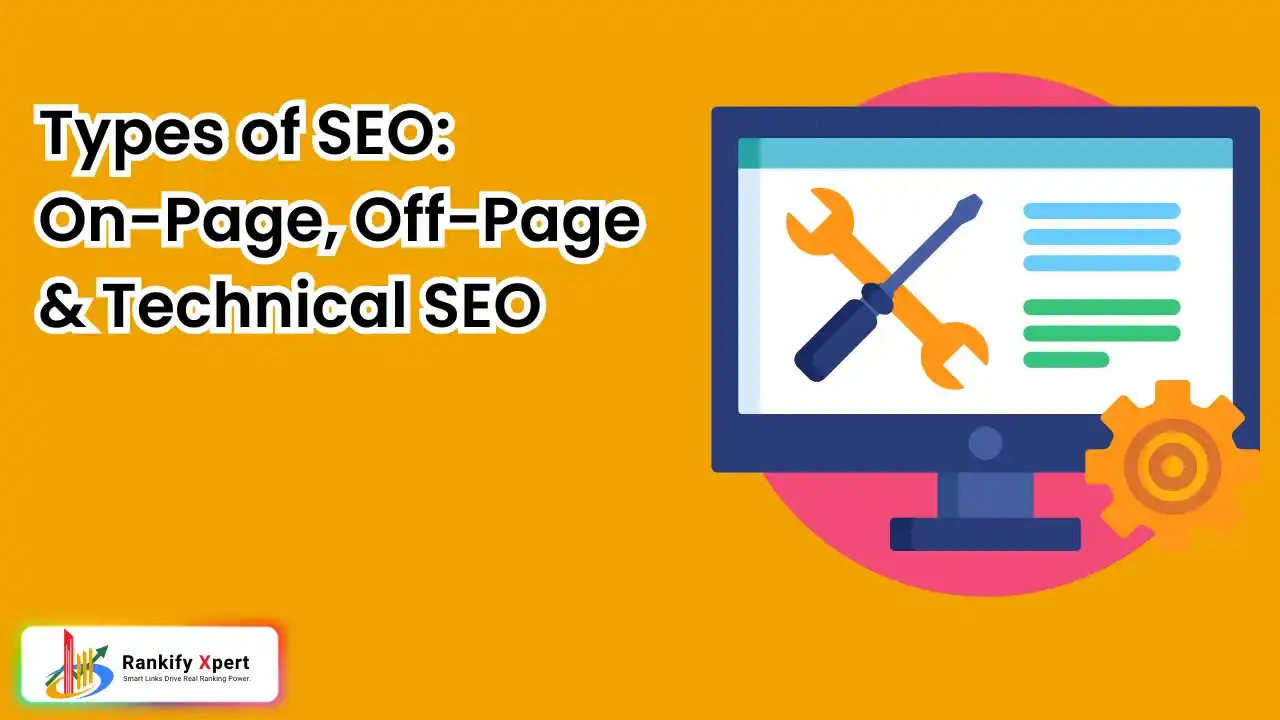In the fast-moving world of SEO, where algorithms change instant and trends fade just as fast, one thing balance constant backlinks still rule the game. So for, not every link carries the same weight. The real magic isn’t in how many links you have, but in having purposeful backlinks the kind that spark genuine engagement, earn trust, and ultimately drive conversions.
Picture your website not just climbing search rankings, but becoming a trusted brand your audience believes in. That’s the hidden power of quality backlinks they don’t just send traffic; they attract the right people who are ready to take action.
Still, many marketers get it wrong. They focus on quantity over quality, chasing backlinks that look good in analytics but deliver little in real results. The truth is, modern link building has evolved. It’s no longer about random placements or spammy exchanges. It’s around strategy, relevance, and authority. When your backlinks arrive from credible, niche-relevant sources, they amplify your visibility and power source your conversion growth.
In this guide, you’ll discover how purpose-driven link building, when done with clarity and intent, can turn your website from simply being seen to truly being trusted and influential.
The Era of Meaningful Links: Why Quantity No Longer Wins
There was a time when websites ranked high just by collecting thousands of backlinks. But today, SEO has changed completely. Google now focuses on quality backlinks, not quantity. What truly helps your site grow is building authentic connections from relevant and trusted websites.
In this new era, meaningful links carry real SEO value. A few contextual backlinks from reputable sources can boost your domain authority more than hundreds of random ones. It’s not about getting more links; it’s about earning the right ones that drive organic traffic and build trust signals with both users and search engines.

The Backlink Overload Myth
Many marketers still fall for the idea that more backlinks equal better rankings. They buy low-quality links, submit to every directory, and chase link quantity instead of link equity. The result is predictable: lots of traffic but no engagement or conversions.
When backlinks lack relevance or contextual connection, visitors may click but quickly leave. These links don’t build trust or authority; they only inflate numbers. Google’s algorithms are now smart enough to detect link spam and ignore irrelevant signals. What works best are editorial links placed naturally within useful, topic-related content.
Remember, one relevant backlink from a niche authority can outperform hundreds of generic ones. Focus on value, not volume.
How Google’s Algorithms Reward Relevance and Authenticity
Google’s modern ranking system is built around E-E-A-T Experience, Expertise, Authoritativeness, and Trustworthiness. Each backlink is treated like a digital recommendation. When credible websites mention you, it strengthens your trust flow and SEO authority.
Authentic backlinks come from websites that share your niche, use natural anchor text, and provide value to readers. Google rewards these with higher organic rankings because they reflect genuine content relevance and expertise.
On the other hand, automated link schemes or irrelevant mentions create an unnatural pattern. That’s why maintaining a natural link profile is essential for long-term ranking stability.
When Too Many Links Turn Toxic
Getting too many backlinks too fast can do more harm than good. Google may see it as a sign of manipulative link building and issue a penalty. Many site owners have lost traffic, rankings, and credibility due to toxic backlinks from spammy or unrelated domains.
Imagine putting in months of effort to grow your brand, only to see your site drop in search results overnight. It’s not just a technical loss; it’s emotional too watching your work fade because of bad link choices.
Toxic backlinks drain your site’s authority, reduce organic visibility, and damage your brand reputation. That’s why regular backlink audits, disavowing harmful links, and focusing on ethical link building are crucial steps for sustainable SEO success.
Real success comes from patience, relevance, and integrity. Build purposeful backlinks that reflect your brand’s credibility and expertise, and your growth will stay strong for years.
What Makes a Backlink Truly Purposeful?
A purposeful backlink isn’t just a clickable URL. It’s a bridge built on trust, relevance, and intent. The best backlinks don’t exist just for algorithms; they exist for people. They connect your content to the right audience in a meaningful, human-centered way.
When a backlink naturally fits into valuable content, it enhances both user experience and SEO authority. It tells Google that your website adds genuine value to ongoing conversations in your niche. Purposeful backlinks are like digital recommendations from voices that matter links that inspire confidence and drive authentic engagement.

Relevance that Resonates with Humans (Not Just Crawlers)
The most powerful backlinks live inside relevant, context-driven content where readers actually care. It’s not enough for a site to just mention you; the mention needs to make sense within the story being told.
When a marketing blog links to your SEO insights or a fitness coach mentions your wellness guide, those links feel natural and add value to readers. That’s contextual relevance something both users and search engines respect.
Google now measures how well your backlink fits the semantic context of the page. So, focus on niche alignment, topic depth, and content harmony. When your links are placed in content that matches your message, they don’t just boost rankings they connect emotionally with real humans, not just crawlers.
Credibility that Transfers Trust
Think of backlinks as trust signals. When a respected site in your industry mentions you, it’s like borrowing trust from the giants of your niche. This digital endorsement tells both users and search engines that your content is credible, safe, and worth exploring.
A backlink from an authoritative domain carries the weight of its reputation. It passes link equity, strengthens your domain authority, and builds long-term SEO momentum.
For example, if a recognized marketing platform links to your article on link-building strategies, that one mention can transform how your brand is perceived. Trust flows both ways the source lends its authority, and your content amplifies it through authenticity and insight.
Purposeful backlinks don’t just improve rankings; they shape brand perception and digital credibility.
Engagement that Converts Visitors into Believers
A purposeful backlink doesn’t stop at traffic; it drives transformation. The true value of a link lies in what happens after the click.
When users land on your site from a trusted source, they already come with a level of confidence. What keeps them there is your content’s emotional and intellectual connection.
Purposeful backlinks bring in visitors who actually care about what you offer. They stay longer, explore more, and often convert because the link felt authentic not forced.
It’s this harmony of engagement, relevance, and trust that turns casual readers into loyal followers. That’s why meaningful link building isn’t about chasing numbers; it’s about creating connection-driven growth that lasts.
Crafting Backlinks That Convert: The Quality-Over-Quantity Framework
Building backlinks that actually convert is both an art and a strategy. The modern SEO landscape doesn’t reward how many links you have it rewards how meaningful and strategic they are.
A link that brings zero engagement or relevance isn’t progress; it’s noise. The quality-over-quantity mindset shifts your focus from chasing numbers to nurturing relationships, understanding audience intent, and creating content people truly trust.
Here’s how to build backlinks that don’t just improve rankings but genuinely drive conversions and credibility.

Step 1: Identify High-Intent Link Opportunities
The most valuable backlinks come from sites that share your audience’s interests and intent. Instead of running after every high-DA domain, focus on authority with alignment — websites that actually speak to your target readers.
Look for contextual fit and semantic similarity. For instance, if your content is about sustainable marketing, a backlink from an eco-branding site will carry far more weight than a random tech blog.
These high-intent link sources naturally send engaged visitors who are already interested in your niche. They don’t just click; they interact, stay, and convert because the link led them to exactly what they were seeking.
Step 2: Build Relationships Before Backlinks
The strongest backlinks are built on trust, not templates. Real outreach begins with genuine human connection. Before asking for a link, take time to engage with creators in your niche comment on their content, share insights, and offer value first.
When you build relationships instead of cold-pitching, your link requests stop feeling transactional and start feeling collaborative. This approach builds authentic partnerships, not one-time exchanges.
Remember, Google now values brand mentions, link context, and co-citation signals all of which come naturally from organic relationships. So, start conversations before you start campaigns.
Step 3: Anchor Text that Flows Naturally
Anchors are like road signs guiding users and crawlers toward meaning. But forcing keywords or over-optimizing anchors can backfire. Instead, focus on natural anchor text diversity using branded, partial-match, and contextual variations.
Example: Instead of repeating the same “SEO services” anchor across multiple sites, use phrases like “expert SEO solutions,” “trusted search optimization agency,” or “visit RankifyXpert for tailored strategies.”
This approach maintains semantic fluidity and prevents over-optimization. When anchor text fits naturally within content, it builds trust, signals topical relevance, and improves your link’s ranking potential.
Step 4: Measure Quality Using Impact Metrics
True backlink quality isn’t defined by DA or DR alone it’s measured by impact. Focus on what really matters:
- Referral traffic: Are people clicking and staying?
- Conversions: Are those visitors taking action?
- Dwell time and engagement: Are they reading your content or bouncing away?
These behavioral signals tell search engines that your backlinks are driving meaningful user interactions, not just artificial traffic spikes.
When you track links based on real business outcomes instead of vanity metrics, your SEO strategy becomes smarter, leaner, and far more profitable.
Emotional ROI: How Quality Links Build More Than Rankings
Most marketers see backlinks as a ranking factor but in reality, their true power goes deeper. A quality backlink isn’t just an SEO tool; it’s a trust signal, a silent brand ambassador, and a psychological bridge between audiences and your business.
When done right, purposeful backlinks spark emotion they create confidence, recognition, and loyalty. This emotional ROI is what turns random visitors into loyal followers and eventually, paying customers.

From Traffic to Trust: The Emotional Chain Reaction
Every click that comes from a credible website already carries a hint of trust. When people discover your brand through a source they already believe in, they arrive with positive expectations.
That’s where the emotional chain reaction begins. Quality backlinks do more than drive visitors they make those visitors believe in your brand’s reliability. It’s not just referral traffic; it’s trust transfer.
Think about it this way: if your business is recommended by an expert, people listen. The same principle applies online. When a well-known platform links to your content, it tells audiences that you’re worth their attention.
Over time, these links shape how your brand is felt, not just how it’s found.
The Psychological Power of Association
Human psychology naturally connects credibility through association. When visitors see your brand mentioned on trusted sites, their brains make a subconscious connection “If this site trusts them, maybe I can too.”
This mental shortcut, known as the halo effect, works wonders for brand perception. Even without consciously realizing it, users begin to view your content as more credible, your services as more reliable, and your brand as more professional.
This is why links from authoritative, niche-relevant platforms are far more powerful than dozens of generic ones. They create psychological validation, not just technical authority.
The Ripple Effect: Long-Term Brand Equity
The beauty of high-quality backlinks is that their value doesn’t fade when the campaign ends. A single authentic mention on a reputable site continues to generate awareness, clicks, and credibility long after you’ve built it.
This is the ripple effect of purposeful linking. Every quality backlink strengthens your brand’s digital ecosystem. It helps search engines understand your relevance, and it keeps your brand visible in front of new audiences.
Over time, this builds brand equity the kind of long-term value that can’t be achieved by quick SEO tricks. Quality backlinks quietly compound trust and visibility, laying the foundation for sustainable online growth.
When you focus on emotional impact along with SEO metrics, backlinks become more than ranking tools they become the roots of lasting brand success.
Real-World Examples of Purposeful Link Building
Sometimes, the best way to understand the power of purposeful backlinks is through real stories not theories. Numbers can show growth, but stories reveal why that growth happened. These examples demonstrate how focusing on quality and intent can outperform any volume-based strategy.
Case Study 1: A Brand That Turned Authority Into Action
One of RankifyXpert’s clients, a growing SaaS startup, struggled with visibility despite publishing great content every week. They had dozens of backlinks but most came from irrelevant blogs or generic directories that brought no engagement.
Instead of chasing more links, the strategy shifted toward earning authority-based backlinks. The goal wasn’t just traffic it was trust. The team identified a handful of reputable industry blogs where their audience genuinely spent time and collaborated on guest posts that offered real insight, not self-promotion.
Within weeks, something shifted. Referral traffic increased but more importantly, the conversion rate nearly doubled. Visitors arriving through those contextual links spent longer on-site and signed up for demos at a much higher rate.
The emotional ROI was clear: by being seen on platforms their audience respected, the brand didn’t just gain traffic; it earned credibility and confidence. Purposeful backlinks turned authority into action.
Case Study 2: When a Few Powerful Links Outperformed 100+ Low-Quality Ones
Another campaign taught a valuable lesson about restraint. A local eCommerce brand had previously purchased hundreds of backlinks from random blogs, hoping to “boost rankings fast.” For a short time, it worked until Google’s algorithm caught up. Rankings dropped, organic traffic stalled, and trust signals plummeted.
RankifyXpert stepped in with a quality-first framework. Instead of rebuilding quantity, the team targeted just five highly relevant, authoritative sites that aligned perfectly with the brand’s niche and tone. Each collaboration focused on storytelling, product education, and real user value.
The result? Those five backlinks drove more organic sales and engagement than all the previous 100+ links combined. The difference wasn’t just technical it was emotional. Visitors arriving from credible sources were already halfway convinced.
It proved a simple truth: purposeful backlinks multiply impact, while low-quality ones dilute it. The right link doesn’t just rank pages it resonates with people.
Tools & Techniques for Ethical, High-Impact Link Building
Purposeful backlinks don’t happen by luck they’re built with research, relevance, and relationship-based strategy. To make every link count, you need tools that not only simplify the process but also keep it ethical, transparent, and human-centered.
These tools help uncover link opportunities, manage personalized outreach, and monitor results to ensure that every backlink you earn contributes to real growth and lasting authority.
Tools for Link Discovery: Ahrefs, Semrush, BuzzSumo, and More
The foundation of every great link-building strategy is data. Tools like Ahrefs, Semrush, and BuzzSumo give you deep insights into where your competitors earn links, what type of content attracts them, and which domains have the highest topical relevance.
- Ahrefs helps you analyze backlink profiles, identify referring domains, and discover broken link opportunities.
- Semrush goes further with keyword intent tracking and link toxicity reports, helping you focus only on high-value prospects.
- BuzzSumo is perfect for finding trending topics and influencers, ensuring your content aligns with what audiences are actually engaging with.
By combining these insights, you can target link opportunities that are relevant, authoritative, and aligned with your audience’s interests the true definition of semantic and contextual linking.
Outreach Tools That Personalize at Scale: Pitchbox, Hunter.io, Respona
Reaching out for backlinks doesn’t have to mean sending generic templates. Modern outreach tools like Pitchbox, Hunter.io, and Respona make it easy to connect with the right people while keeping your approach personalized.
- Hunter.io helps find verified email addresses of website editors and content managers.
- Pitchbox automates outreach follow-ups but keeps your tone genuine and human.
- Respona integrates content research with outreach, so your pitch always feels relevant and value-driven.
These tools allow you to build real relationships at scale, not spam lists. The goal is to approach outreach as collaboration, not solicitation offering mutual value that results in natural, high-quality backlinks.
Monitor, Refine, Repeat: The Continuous Improvement Loop
Even the best backlinks lose value if they aren’t monitored. Continuous improvement is the secret to long-term SEO growth.
Track how each backlink performs not just by domain authority, but by referral traffic, user engagement, dwell time, and conversion impact. Tools like Google Search Console, Ahrefs Alerts, or Semrush Backlink Audit can notify you about new links, lost links, and overall health of your link profile.
Use this data to refine your strategy. Keep investing in what’s working — content that earns engagement, outreach methods that build trust, and partners who share your audience values.
Ethical link building isn’t a one-time tactic; it’s a living strategy that grows stronger through consistent learning and improvement.
The Future of Purposeful Backlinking: Beyond 2025
Backlinking is evolving faster than ever. What once started as a numbers game has now become a strategy rooted in authenticity, storytelling, and audience connection. As we move beyond 2025, the future of link building is shifting toward purpose where trust, personalization, and human emotion define real SEO success.
The next chapter of link building isn’t about tricking algorithms; it’s about aligning with how people think, feel, and engage online.

AI, Personalization, and Digital PR Evolution
Artificial Intelligence is transforming how we discover and build links. Instead of mass outreach and keyword stuffing, AI-powered tools now help marketers identify contextual link opportunities that fit perfectly within the user journey.
But the biggest shift isn’t technical it’s emotional. Link building is merging with digital PR and brand storytelling. Earning backlinks will no longer mean asking for a mention; it will mean creating stories people want to talk about.
From personalized outreach powered by AI to predictive analytics that understand user intent, the future belongs to brands that merge data with empathy. Those that connect logic and emotion will see their links not just rank but resonate.
In this future, backlinks will serve as digital trust bridges, connecting real human experiences with authentic content.
The Rise of Human-Centric SEO
Search engines are getting smarter, but users are getting wiser. They can tell when a brand is chasing clicks versus when it genuinely cares. The future of purposeful backlinking is human-first SEO strategies built on empathy, credibility, and long-term relationships.
Google’s evolving algorithms, like EEAT (Experience, Expertise, Authoritativeness, and Trustworthiness), reward brands that prove real value, not shortcuts. That’s why emotional resonance, content quality, and audience connection will outweigh all vanity metrics.
The takeaway is simple yet powerful: the future belongs to brands that earn trust, not chase links.
When backlinks are built with intent, emotion, and purpose, they stop being just hyperlinks they become proof of belief. That’s the real hidden power behind purposeful backlinks.
Conclusion: From Numbers to Narratives
Every backlink tells a story a story about credibility, connection, and care. The real success in link building doesn’t come from chasing hundreds of random mentions; it comes from creating meaningful connections that people trust and remember.
When your story resonates with authenticity, empathy, and expertise, conversions stop being a goal and start becoming a natural outcome. Purposeful backlinks do more than boost rankings they turn your brand into a trusted voice that audiences believe in.
So as SEO continues to evolve, remember: it’s not about building links; it’s about building belief.
👉 Want to build backlinks that actually convert?
Let RankifyXpert help you craft a link profile that grows both trust and traffic, one purposeful connection at a time.



